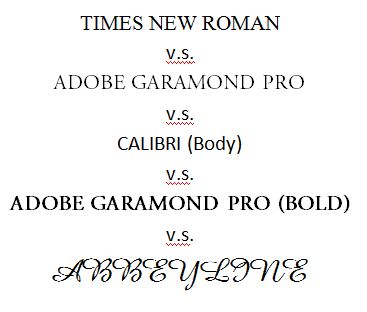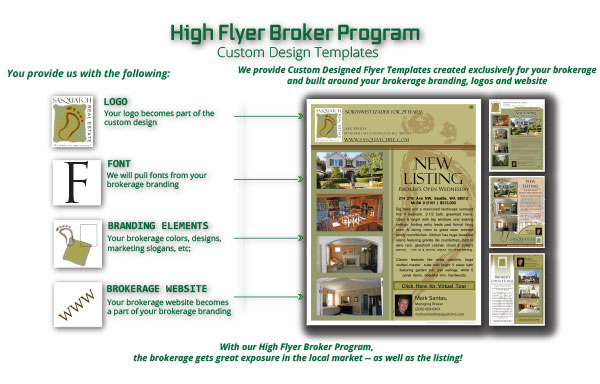Posted on July 19th, 2016 by Mark Hayden | Categories: Marketing & ZipTips
Ensure Your Future E-Flyer Orders Are Ready On Time!
 Hello, ZYF E-Mail Deliverability Specialist Aaron L’Heureux (“La-Roo”) here once again to give you some helpful e-marketing advice. Today I want to show you the best ways to ensure your time sensitive listings can be delivered punctually.
Hello, ZYF E-Mail Deliverability Specialist Aaron L’Heureux (“La-Roo”) here once again to give you some helpful e-marketing advice. Today I want to show you the best ways to ensure your time sensitive listings can be delivered punctually.
The Single Best Way To Ensure Timely Delivery Is To Order Early.
Above any other advice I can give you, get your order in as soon as possible! Even a couple days or weeks aren’t too early, as you have the ability to schedule a later release date. One of the most glaring errors some of our open house customers can make is to try place an order late on the day before their open. Building a flyer takes time, and turnaround of a flyer depends on customer approval. Without customer approval we can’t send. Speaking of approval…
Approve On Time!
While ZYF can set up its systems to send future e-flyer orders anytime after the order is approved for delivery, we are only available to process your approval between the hours of 6:30am and 3pm. If you are trying to approve an order for delivery the day before your open house, it is important that your approval is in before 3:00pm! Otherwise, we won’t be able to set up your order on time for sending the following day.
Make Sure Your Order Is Correct Before You Hit That Approved Button.
Carefully reviewing a flyer only takes a few minutes, and any revisions your approval might require do not take long. However, some agents skip the review process altogether and simply approve, only to view the flyer later on and notice changes that should have been made before the flyer was sent out. Fixing these mistakes times extra time and effort, and could hinder the sale of the listing.
Posted on July 11th, 2016 by Mark Hayden | Categories: Marketing & ZipTips
I strongly suggested that agents avoid using abbreviations when composing the body text of your e-flyer. I’ll use this article to cover a few additional tips to help make your e-flyer the best it can be!
Pursuant to our last entry, we’ve already emphasized the “quality over quantity” approach: avoiding abbreviations, and making sure that while a full body of text is provided, that it is not of such a quantity that our designers are forced to shrink the font for the sake of fitting everything in at the cost of legibility. This of course raises the question: “Is there enough room for everything?” No, but you don’t need to list everything either. Consider using your e-flyer as a tangible source of truly interesting information. Use your e-flyer to show the best and leave the rest to linked listing websites or virtual tours using our convenient weblink functionality built right into your e-flyer. This technology allows you to link up to two tour or listing websites, in addition to a third weblink for your brokerage.
In addition to the key items (bedrooms, bathrooms, square footage, all of which only takes up about a sentence) be sure to use your limited space to talk about truly unique features of the property. Remember the importance of location (location, location!) and tell your audience about what makes the location special and unique. Tell them about the curb appeal of the property, pools, landscaping, casitas, lanais and so on. Tell your audience about the rich hard wood floors, study doors, formal living area, solariums.
Perhaps the single most important thing to do is the record all of these important features while you wander through your listing. Write, record or photograph as much as you can when you visit the house. A busy real estate agent such as yourself will never memorize every little detail without a little help, especially if you are listing more than one property.
Please remember to check our facebook or twitter pages for our latest promotions and samples! ALSO remember, you can subscribe for free to be the first to know of New Listings, Broker’s Opens, Special Agent Commissions… and much more in your area.
Posted on June 27th, 2016 by Mark Hayden | Categories: Marketing & ZipTips
A SET OF BIG, BOLD CAPITAL LETTERS WILL GRAB THE ATTENTION OF YOUR AUDIENCE.
Many of our most popular e-flyers feature “script” or “cursive” typefaces meant to represent ornate handwriting. While appealing to the eye, script typefaces are often meant to be used in the lowercase, while the uppercase lettering is larger and more ornate and meant to be used at the front of words, rather than throughout. The decision to use script fonts is a fine one, and the fonts we use are generally quite legible, but keep in mind the limited ability of these fonts to be used with capital letters.

If your script font does end up in all caps, one of our designers will often change it to another suitable font to ensure legibility. Typically when I make this kind of change I strongly favor the use of one of the Adobe Garamond Pro fonts. These fonts are great because of their versatility and ease of use across a wide variety of formats and styles. See a few examples below.

BUT IF EVERY THING IS CAPITALIZED, THE EFFECT IS LOST!
Every day our design team sees at least a few flyers which exclusively use capital lettering. The danger in this is that the emphasis is lost. A flyer is a short document, in the case of our flyers usually a little less than a page of information. To attempt to emphasize the entire document by using capital lettering is therefore self-defeating: because the whole of the document is visible at a glance, and all the text appears similar, albeit in capital lettering. Switching between the two styles can be far more effective.
Please remember to check our facebook or twitter pages for our latest promotions and samples! ALSO remember, you can subscribe for free to be the first to know of New Listings, Broker’s Opens, Special Agent Commissions… and much more in your area.
Posted on June 27th, 2016 by Mark Hayden | Categories: Marketing & ZipTips
“What can I do to Create Effective Real Estate Flyers?”
Of all the materials our clients submit to us in the e-flyer creation process, one of the most critical is also one of the most banal: the body text or summary. This is a part of e-flyer creation that is easy to overlook and can be difficult to put together; after all it is real work! A decent body text requires facts, attentive composition and careful proof reading. And at the same time it requires a light touch; too much verbosity and designers like me have to begin reducing the font size and spacing, which hurts legibility. If space is truly at a premium you might even feel compelled to begin abbreviating terms, which can work well enough to a point. Ultimately your flyer’s audience will want to spend more time reading your body text than deciphering the mysterious abbreviations you use.
The body text is basically your domain: as much as we designers might want to, we are generally discouraged from taking artistic liberties with body text. We have a prerogative to make sure our flyers go out without glaring grammatical errors or typos, but that ends when it comes to issues of style. I for one encourage you to write out your words, instead of using abbreviations; this makes it quicker and easier for designers to proof read as we don’t have to hunt around for definitions to more obscure (or completely fabricated) abbreviations. If it makes it easier for our designers to read, it surely makes it easier for your audience!
When it comes to Headers and Sub-headers, ZYF’s policy becomes a bit more stringent; with these items we spell out completely in order to make them as clear and legible as possible. So we suggest you avoid abbreviations, but what else can you do to improve your flyer’s legibility? Check out the second part of this two of this blog entry!
Please remember to check our facebook or twitter pages for our latest promotions and samples! ALSO remember, you can subscribe for free to be the first to know of New Listings, Broker’s Opens, Special Agent Commissions… and much more in your area.
Posted on March 31st, 2016 by Mark Hayden | Categories: Marketing & ZipTips
Our E-Flyers Make Long Virtual Tour Links a Cinch!
 When our customers request the inclusion of Virtual Tour links in their orders, we are generally happy to comply. Though Virtual Tour links can often appear large and ungainly, we can generally hide this fact thanks to the HTML that our flyers use. Instead of having to put a massive 60 character Virtual Tour link on the flyer, we can easily hide the link in a much smaller and more readily identifiable space that reads something like “Click Here for the Virtual Tour!” or “Click Here for Listing Information”
When our customers request the inclusion of Virtual Tour links in their orders, we are generally happy to comply. Though Virtual Tour links can often appear large and ungainly, we can generally hide this fact thanks to the HTML that our flyers use. Instead of having to put a massive 60 character Virtual Tour link on the flyer, we can easily hide the link in a much smaller and more readily identifiable space that reads something like “Click Here for the Virtual Tour!” or “Click Here for Listing Information”
Unfortunately Printed Flyers Do Not Have Hyperlinks
When our customers include a Virtual Tour (or other) link for use in our PDFs or Printed Flyers, they sometimes overlook the length of their links. Many links are quite reasonable in length, often consisting of just a property address, or something simple like an agent’s name. However some links can get downright long, consisting of dozens of characters, that few viewers will want to transcribe into their browser.
No One Wants to Transcribe a 60 character Virtual Tour URL
It’s sad, but true. Very long URLs are easy to dismiss out of hand because of the added hassle of typing them in. So, what can you do to make a long Virtual Tour URL more manageable? For the answer, we turn to one of our great customer service reps, Grant Scott.
 Thanks Mark, and hello everyone!
Thanks Mark, and hello everyone!
Several companies, including Google, offer URL Shorteners. These are easily the best solution for helping links to fit on printed flyers (and by association, the print-quality PDFs we offer).
A URL Shortener works by taking the original URL, and having a second, much shorter URL point to it. The second (shorter) URL is then distributed with the e-flyer, and when it is typed in will link back to the larger original URL. Note that the shortened URL will generally appear to be a half dozen random characters, but it will still be easier to type in.
I encourage you to go forth and do some of your own research. Since ZYF does not offer these services, we cannot guarantee how effective or reliable they may be. Like with any virtual service, diligence is the key.
For our latest promotions and samples, check our facebook or twitter pages!
Posted on January 22nd, 2016 by Mark Hayden | Categories: Marketing & ZipTips
E-Flyers Benefit Greatly from Transparent Agent Logos!
 Here are some E-Flyer Tips to make sure your E-Flyer looks as great as it possibly can. Transparent Agent Logos are a great way to give your ZYF designer flexibility when incorporating your listing into one of our E-Flyer designs. Most of the agents who use our service like to incorporate a brokerage or agent logo of their own into their design, this helps distinguish them from other agents and advance the identity of their brand. Logos come in a number of shapes, sizes and qualities. We won’t discuss the virtues of what makes for a good or bad logo here, but I will say this:
Here are some E-Flyer Tips to make sure your E-Flyer looks as great as it possibly can. Transparent Agent Logos are a great way to give your ZYF designer flexibility when incorporating your listing into one of our E-Flyer designs. Most of the agents who use our service like to incorporate a brokerage or agent logo of their own into their design, this helps distinguish them from other agents and advance the identity of their brand. Logos come in a number of shapes, sizes and qualities. We won’t discuss the virtues of what makes for a good or bad logo here, but I will say this:
Nothing makes your agent logo easier to work with than a transparent background!
Many of the E-Flyers we send out feature agent head shots and logos. Many of these logos are simple .JPEG (“Jay-Peg”) images, a standard image format without any special attributes or the somewhat more versatile .GIF (“Jiff”). Another increasingly common image format is the .PNG (“Pee-En-Gee”), a special format that allows users to easily make images with transparent backgrounds.
We at ZYF think that .PNG files are great, because of their increased versatility. Often a .JPG will feature a simple (generally white) background, which works well on some of our e-flyers that feature white backgrounds such as “Simple”, “Aero”, “Modern” or the ever-popular “Superior White”. However, a growing number of our flyers feature colorful or patterned backgrounds, which can draw a lot of attention to unsightly white spaces in a .JPEG image (see the cover image).
A great solution to these sometimes undesirable backgrounds is the use of a .PNG file (.GIFs can also be used). Out designers can use a .PNG directly on e-flyers without any need for a background. However, a .PNG image without its own background can blend in to a e-flyer in unintended ways, decreasing the visibility of the logo. To counter this, .PNG files offer our designers the ability to easily add in different background colors that will compliment both the flyer and the logo. To tell us a bit more about what makes the .png format perfect for your next logo, we’ll talk to our newest designer, Ashley Ferguson.
 I’m glad you asked me, Mark! First, the .PNG format is a lossless format. Unlike .JPEGs, which are designed for internet use and compress images, sometimes causing artifacts, .PNGs are designed to maintain the highest image quality possible. This means no more strange pixilation of your pictures, just a high-quality image. PNGs are also one of the few file formats that allow for the use of transparency, the ability to leave pixels “blank/transparent”, but unlike .TIFF, .EPS, or .AI (which also feature transparency) it is usable across a number of programs and browsers while requiring less memory.
I’m glad you asked me, Mark! First, the .PNG format is a lossless format. Unlike .JPEGs, which are designed for internet use and compress images, sometimes causing artifacts, .PNGs are designed to maintain the highest image quality possible. This means no more strange pixilation of your pictures, just a high-quality image. PNGs are also one of the few file formats that allow for the use of transparency, the ability to leave pixels “blank/transparent”, but unlike .TIFF, .EPS, or .AI (which also feature transparency) it is usable across a number of programs and browsers while requiring less memory.
Please remember to check our facebook or twitter pages for our latest promotions and samples!
Posted on December 17th, 2015 by Mark Hayden | Categories: General, Marketing & ZipTips
The High Flyer Broker Program for Large Real Estate Brokerages
Participation is FREE!
We are excited to introduce our new High Flyer Broker Program. We created this program to offer highly customized Email Flyer and Print Flyer solutions to larger brokerages of 50 agents or more. As a Broker participating in the High Flyer Broker Program, you will have an account rep dedicated to you individually. The services provided will be totally customized for each brokerage. For your agents a custom program could include product discounts, Special Extras with each order, like PDF’s or Printed Flyers. The program can also include Special Incentives for you, the Broker. We will work directly with you to learn what you feel is most important. From there we will create a unique High Flyer Broker Program just for you and your agents.
Flyers Created Exclusively for Your Brokerage
ZYF’s skilled designers will create a group of flyer templates built around your brokerage’s branding, logo, website, slogan, font … for the exclusive use of your agents. Since your branding is an integral part of the flyer, it means more visibility for your brokerage with each E-Flyer your agents send to the local market, and each Print Flyer in the flyer box. For example:

Visit our High Flyer Broker Program page for more information.
Click here for ZYF to Contact You to Learn More.
For our latest promotions and samples, check our facebook or twitter pages!
Posted on December 7th, 2015 by Mark Hayden | Categories: Marketing & ZipTips
E-Flyer Legibility is Critical:
You already have very limited space with which to convey your written thoughts on the property you are selling, and it’s a shame when this important information is lost to difficult-to-read formatting. While our in-house design team is well-versed at ensuring the legibility of the flyers we work on, some of the custom orders we receive can be lacking. So, what can be done to make sure your custom e-flyer is the most legible it can be?
-
Pick a legible font.
Not all fonts are created equally when it comes to legibility. Script fonts are particularly difficult to work with at the smaller sizes commonly used in body text. Script fonts are best suited for headers and sub-headers, just remember to keep them especially large and legible. The best fonts to use in body text are block letters, and a variety will work well. Just remember…
-
Pick a suitable font size.
Some fonts do work better than others when reduced in size, but any font will become illegible when made small enough. Keep in mind that custom e-flyer images are often shrunk as part of the process of encoding them in HTML. Use fonts that are a little bigger; it might look a little too large when the flyer is being made. Keep in mind that if a hypothetical custom e-flyer image arrives to us at 2720×3250, it will be converted to 680×813, roughly 1/16th its original size. You can then imagine what this will do to font size.
-
Pick a suitable font color.
Font color is critical to legibility. If you have a dark font against a dark background, or a light font against a light background, it can often have a strong impact on readability. Try to use blacks, whites and yellows for font color, depending upon if a background is light (use black) or dark (use white or yellows).
Remember: you put forth a lot of effort to get this custom e-flyer out there. Make sure your audience can read it!
For our latest promotions and samples, check our facebook or twitter pages!
Posted on November 9th, 2015 by Mark Hayden | Categories: Marketing & ZipTips
In addition to the many in-house e-flyer products we at ZYF offer, we are also fully capable of sending out custom e-flyer designs uploaded by our customers.
This is a popular option for agents who already have custom e-flyer designs on-hand, and those who have access to their own in-house or contracted designers. These orders are just as easy for us to send out as our own in-house designs, but we still have some important tips to ensure things go smoothly.
All the e-flyers sent out by Zipyourflyer.com must meet certain length and width requirements, to minimize technical issues arising from flyers being too small or too large. Broadly the problem breaks down like this: if a flyer is too large, there can be issues displaying in certain e-mail clients. If the image is too small, our code may not display it correctly, leaving unappealing gaps.
So, what is the best size for an uploaded custom e-flyer?
For your custom e-flyer we strongly recommend a layout of 8.5 x 11 inches or the equivalent measurements thereof. In principal we have some flexibility, but maintaining the 8.5 x 11 standard will help ensure the rapid coding and delivery of your custom e-flyer.
If your custom e-flyer image is in a landscape format, it can still be made to work, though the image can often appear smaller than desired, since with width of our flyers is always at 680 pixels, while the length can be more flexible. This means that portrait flyers has a lot more space to work with.
We strongly advise you to include any links you wish to appear on the flyer in your design notes. This will make it much easier for our designers to know what links you want, instead of having to “hunt” for them on the custom e-flyer image.
Remember: if we have to shrink or “blow up” your custom e-flyer image, the quality will suffer. Keep in mind that often custom e-flyer images do end up shrunk down, and this can decrease the legibility of the text. It is not uncommon for e-flyer text to start out at 12 or 14 font, and end up at 3 font by the time we finish resizing it. Starting with a larger font can often make an important difference in legibility, at the expense of volume.
Posted on August 10th, 2015 by Mark Hayden | Categories: Marketing & ZipTips
 Hello, I am Zip Your Flyer’s E-mail Deliverability Specialist, Aaron L’Heureux (pronounced “La-Roo”). My job, as the title suggests, is to take our completed E-Flyers and send them to our regional lists, ensuring that they are delivered in a timely and accurate fashion.
Hello, I am Zip Your Flyer’s E-mail Deliverability Specialist, Aaron L’Heureux (pronounced “La-Roo”). My job, as the title suggests, is to take our completed E-Flyers and send them to our regional lists, ensuring that they are delivered in a timely and accurate fashion.
When recipients of our E-Flyers open their inboxes, they will see two important lines with every email: an “Email From Line” and an “Email Subject Line”, both can be set by our clients while placing the initial order and later during revisions. In principle, these two fields can say anything as long as it is true and not misleading (within 225 characters), but some things are definitely better said than others.
The E-Mail From Line

The Email From Line is generally the first thing a ZYF E-Flyer recipient will read, and is surprisingly important. It is a first impression to a huge audience! ZYF’s policy is to allow its customers to enter in whatever information they choose into this field, again as long as it is true and not misleading, for better or worse. The exception to this is an agent email address; We change these as many email providers will weed them out as spam, which results in a lower deliverability rate.
By now you mustbe asking asking “Aaron, what is best in life?” Well, some barbarians will tell you that it is to crush your enemies, and see them driven before you! I will tell you that it is to use your own name and brokerage for the Email From Line. If you do this, your viewers will clearly see who *you* are, and equally important, that you are a member of a brokerage. Anything else won’t get the job done as clearly and concisely. If you are an independent broker, you can also say “Broker” instead of the full brokerage name.
And while we are on the topic, you should use the same E-mail From Line consistently with new orders. This is important, as people will begin recognizing you, and you can work toward building your personal brand (and your brokerage’s brand). If people know and recognize you, they are more likely to give your E-Flyer a look.
The E-Mail Subject Line

Unlike the From Line, the Email Subject Line is a blank canvas, though you should keep in mind the 225 character limit (which includes spaces) still applies. However, the Email Subject Line should be kept as succinct as possible, since some email clients (software) will cut you off after a certain number of characters. Give enough info to interest people; broker’s open time and dates, basic info on the house, and so on.
 Like our Operations Manager Deana always says: “The E-Mail Subject Line is like the dust cover of a book; it should be interesting enough that you want to read on, without revealing the whole thing.”
Like our Operations Manager Deana always says: “The E-Mail Subject Line is like the dust cover of a book; it should be interesting enough that you want to read on, without revealing the whole thing.”
 Hello, ZYF E-Mail Deliverability Specialist Aaron L’Heureux (“La-Roo”) here once again to give you some helpful e-marketing advice. Today I want to show you the best ways to ensure your time sensitive listings can be delivered punctually.
Hello, ZYF E-Mail Deliverability Specialist Aaron L’Heureux (“La-Roo”) here once again to give you some helpful e-marketing advice. Today I want to show you the best ways to ensure your time sensitive listings can be delivered punctually.

 When our customers request the inclusion of Virtual Tour links in their orders, we are generally happy to comply. Though Virtual Tour links can often appear large and ungainly, we can generally hide this fact thanks to the HTML that our flyers use. Instead of having to put a massive 60 character Virtual Tour link on the flyer, we can easily hide the link in a much smaller and more readily identifiable space that reads something like “Click Here for the Virtual Tour!” or “Click Here for Listing Information”
When our customers request the inclusion of Virtual Tour links in their orders, we are generally happy to comply. Though Virtual Tour links can often appear large and ungainly, we can generally hide this fact thanks to the HTML that our flyers use. Instead of having to put a massive 60 character Virtual Tour link on the flyer, we can easily hide the link in a much smaller and more readily identifiable space that reads something like “Click Here for the Virtual Tour!” or “Click Here for Listing Information” Thanks Mark, and hello everyone!
Thanks Mark, and hello everyone! I’m glad you asked me, Mark! First, the .PNG format is a lossless format. Unlike .JPEGs, which are designed for internet use and compress images, sometimes causing artifacts, .PNGs are designed to maintain the highest image quality possible. This means no more strange pixilation of your pictures, just a high-quality image. PNGs are also one of the few file formats that allow for the use of transparency, the ability to leave pixels “blank/transparent”, but unlike .TIFF, .EPS, or .AI (which also feature transparency) it is usable across a number of programs and browsers while requiring less memory.
I’m glad you asked me, Mark! First, the .PNG format is a lossless format. Unlike .JPEGs, which are designed for internet use and compress images, sometimes causing artifacts, .PNGs are designed to maintain the highest image quality possible. This means no more strange pixilation of your pictures, just a high-quality image. PNGs are also one of the few file formats that allow for the use of transparency, the ability to leave pixels “blank/transparent”, but unlike .TIFF, .EPS, or .AI (which also feature transparency) it is usable across a number of programs and browsers while requiring less memory.
 Hello, I am Zip Your Flyer’s E-mail Deliverability Specialist, Aaron L’Heureux (pronounced “La-Roo”). My job, as the title suggests, is to take our completed E-Flyers and send them to our regional lists, ensuring that they are delivered in a timely and accurate fashion.
Hello, I am Zip Your Flyer’s E-mail Deliverability Specialist, Aaron L’Heureux (pronounced “La-Roo”). My job, as the title suggests, is to take our completed E-Flyers and send them to our regional lists, ensuring that they are delivered in a timely and accurate fashion.

 Like our Operations Manager Deana always says: “The E-Mail Subject Line is like the dust cover of a book; it should be interesting enough that you want to read on, without revealing the whole thing.”
Like our Operations Manager Deana always says: “The E-Mail Subject Line is like the dust cover of a book; it should be interesting enough that you want to read on, without revealing the whole thing.”